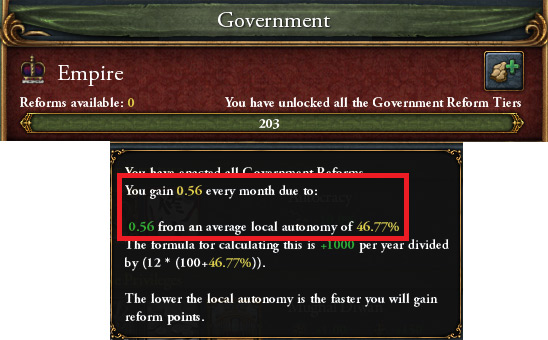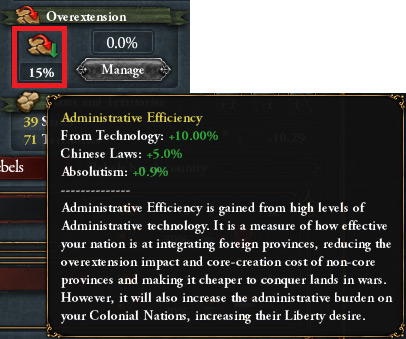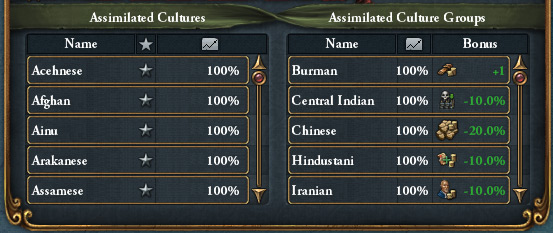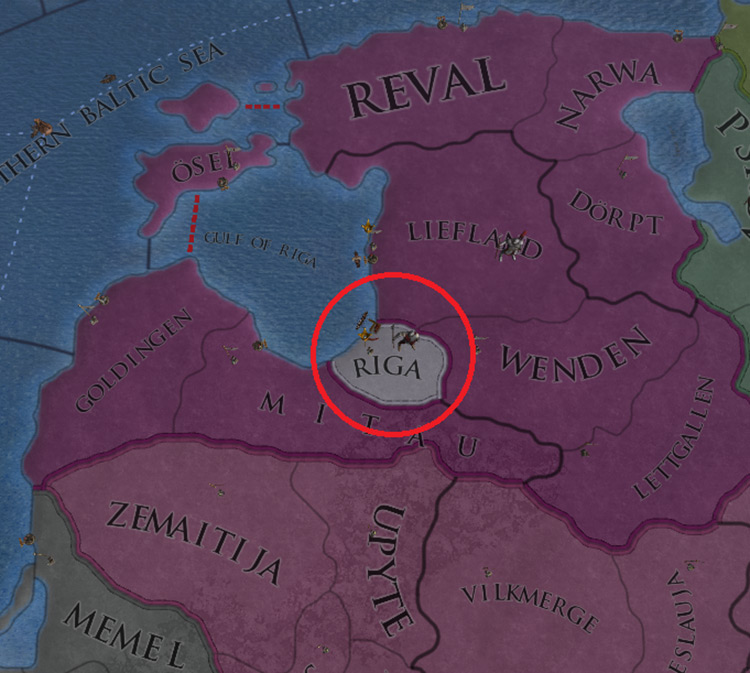In playing tall, you concentrate on improving your country’s existing assets. Your focus will be on these:
Developing provinces Constructing buildings Leveling up technology Passing reforms
With playing wide, you expand your nation by gaining new territory. You’ll mostly be doing these:
Conquering neighbors Annexing vassals Integrating junior partners Colonizing the world
Blobbing is an EU4 slang for playing wide aggressively. A “blob” usually refers to an empire that has rapidly grown large and difficult to defeat.
Are These Playstyles Exclusive?
Not really. It’s normal to switch between styles depending on the situation. Certain countries start strong and can use their early advantage to play wide. Others begin with only a couple of provinces and must bide their time by playing tall. You can do both, but you may not have the resources to manage it. Here’re two example resources which show the differences in the playstyles:
Characteristics of Wide Nations
Nations that are great for playing wide have access to these modifiers: – Can focus on passing reforms
Core-creation cost reduction (CCR) Administrative efficiency
Since wide nations are mostly conquering provinces, CCR can help them budget their admin mana spending. Admin efficiency functions like CCR, but also reduces diplo-annexation costs. Furthermore, it lowers the impact of conquered provinces’ development on:
Overextension War Score Cost Aggressive Expansion
Wide Nations with Unique Features
Certain special mechanics also fit this playstyle better. Some examples are:
- The Empire of China’s Mandate of Heaven Mandate generates faster if the EoC has many tributaries and prosperous states.
- The Holy Roman Emperor’s Imperial Authority Imperial Authority generates faster if there’re a lot of members in the HRE.
- The Mughals’ “Diwan” cultural assimilation system Individual cultures can be assimilated (i.e., become accepted) by conquering all of the provinces that they’re in.
- Russia’s ability to claim entire areas and their “Siberian Frontier” colonies They’ve the option of claiming areas instead of just provinces. They can establish colonies by spending diplo mana, even if they don’t have a colonist.
- Native American tribal federations Native tribes in North America can band together to form a large, unified federation.
Characteristics of Tall Nations
Tall nations primarily benefit from development cost modifiers. These are numerous but are usually miniscule. A tall nation is usually stacking these modifiers on just a few provinces, hence the term “playing tall”. Here’s an example list: By stacking any combination of these, a tall nation can massively reduce the mana costs to develop a province.
Small but Tall Nations
- Netherlands
Their starting area has plenty of cloth-producing farmland with numerous centers of trade. Their unique government guarantees a ruler with high stats, which contribute to their mana generation. They’re in the English Channel end node. This incentivizes them to focus on developing their provinces.
- Korea
They’re in a secluded area with mountains guarding the only land routes into their country. They have lots of paper-producing farmland as well as cotton provinces. Paper is a valuable trade good. Developing their production is an easy way to make money.
- Riga
They’re a one-province minor surrounded by military-minded nations. Their sole province is a center of trade with an estuary. Their mission tree requires that they stay within 6 provinces or less.




